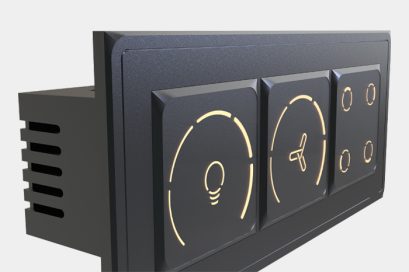3D rendering is a process in computer graphics that involves the creation of two-dimensional images or animations from a three-dimensional model using computer software, which aids visualization of proposed concept Idea for the product.
Modeling:
Description: The first step in 3D rendering is creating a 3D model of the object or scene. This involves defining the shape, structure, and details using 3D modeling software. Models can be created using techniques like polygonal modeling, NURBS modeling, or sculpting.
Texturing:
Description: Once the 3D model is created, textures are applied to simulate surface details such as color, pattern, and reflectivity. Texturing enhances the realism of the rendered images by adding visual details to the surfaces.
Lighting:
Description: Lighting plays a crucial role in 3D rendering. Virtual light sources are positioned to illuminate the scene, and parameters such as intensity, color, and direction are set. Realistic lighting enhances the overall visual appeal and helps create shadows and highlights.
Rendering Engine Setup:
Description: A rendering engine is a specialized software component that processes the 3D scene and generates the final 2D image or animation. Settings such as rendering resolution, camera angles, and output format are configured within the rendering engine.
Camera Setup:
Description: The virtual camera is positioned within the 3D scene to define the perspective from which the final images will be captured. Camera settings, including field of view and depth of field, are adjusted to achieve the desired visual effect.
Rendering Process:
Description: The rendering engine processes the 3D scene, taking into account the modeled geometry, applied textures, lighting conditions, and camera settings. This process involves complex calculations to simulate the behavior of light and generate realistic images.
Ray Tracing or Rasterization:
Description: Depending on the rendering technique used, the rendering engine may employ ray tracing or rasterization. Ray tracing simulates the path of light rays, while rasterization converts 3D information into pixels for display.
Post-Processing:
Description: After the initial rendering, post-processing effects may be applied to enhance the final output. This can include color correction, depth of field adjustments, motion blur, and other effects to improve visual quality.
Output Generation:
Description: The final 2D images or animations are generated as output files. These files can be in various formats, such as JPEG, PNG, or video formats like MP4. The quality of the output is influenced by the rendering settings and the capabilities of the rendering engine.
Real-Time Rendering:
Description: In some applications, such as video games or virtual reality, real-time rendering is used. This involves rendering images or animations in near-instantaneous response to user input, requiring specialized techniques and optimizations.
Feedback and Iteration:
Description: Depending on the purpose of the 3D rendering, feedback is collected from stakeholders, clients, or designers. Iterative changes may be made to the model, textures, lighting, or other aspects based on the feedback received.
3D rendering is a powerful tool that allows Product designers to visualize and communicate their ideas in a realistic and immersive way to the client. It has applications in a wide range of industries, contributing to the creation of stunning visuals for presentations, marketing materials, simulations, and Infomercial content for the customers.


